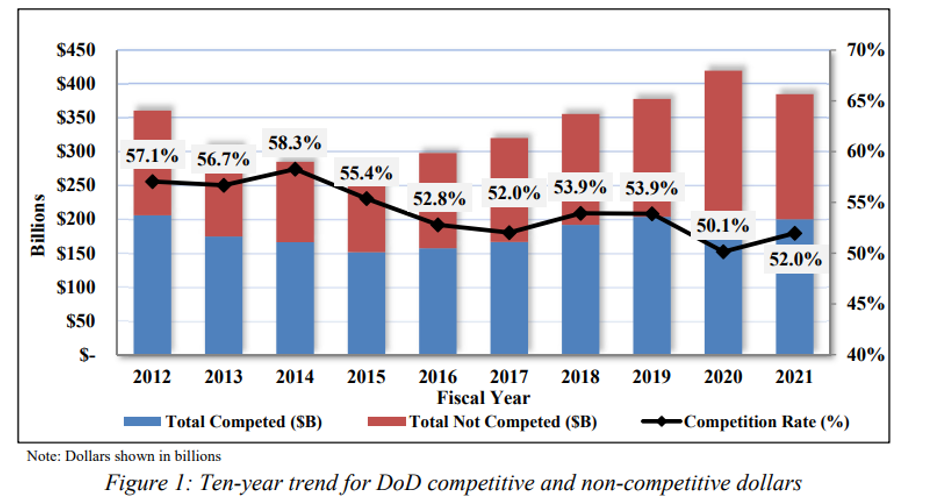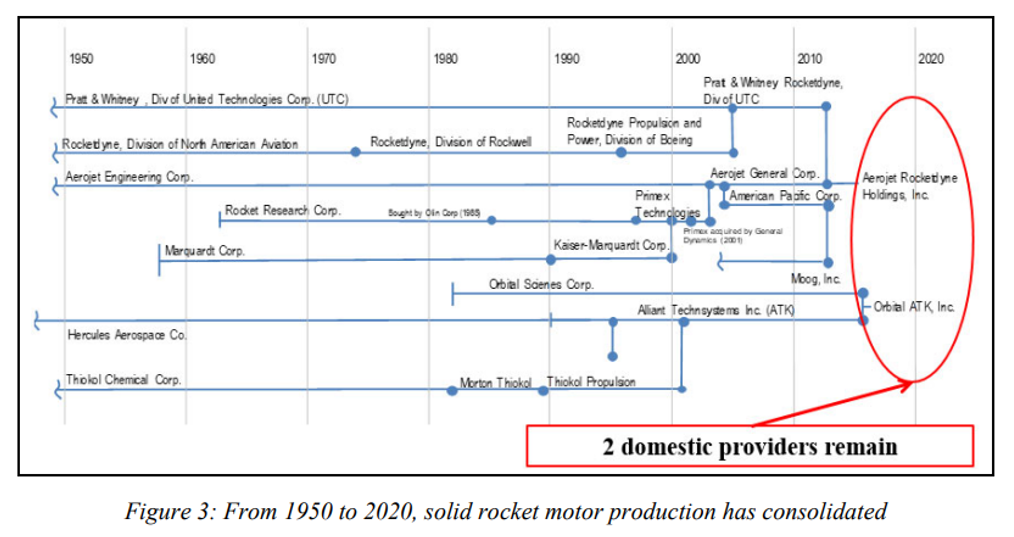Department of Defense Finds US Defense Industry Has Over Consolidated
On 15 Februaryh, the US Department of Defense (DoD) released a new report titled “State of Competition within the Defense Industrial Base”. The report comes in response to President Biden’s July 2021 Executive Order 14036 “on Promoting Competition in the American Economy”. Besides assessing the state of competition within the broadly-defined “defense” industries, the report also provides recommendations for how to improve it.

The DoD is worried by the fact that the defense industrial base (DIB) has become extremely consolidated. While the report argues that DIB competition has remained relatively stable in recent years, it also finds that, since 1990, “the defense sector has consolidated substantially, from 51 to 5 aerospace and defense prime contractors” and 90% of missiles come from just three sources. This development may translate into a decrease in competition which is not good from a national security perspective. Costs of equipment are higher, incentives for innovations are lower and the barrier of entry for new firms is high. Moreover, the ability of an adversary to influence just one private company can have drastic consequences.

To improve the state of competition, the DoD makes five key recommendations.
- First, the department hopes to strengthen merger oversight and thus inhibit further consolidation of the DIB.
- Second, the DoD aims to revamp its approach to intellectual property so that it no longer poses as much of an anti-competitive hinderance to DoD purchases.
- Third, the Department of Defense wishes to attract new companies to the defense industrial sector by reducing barriers to entry “through small business outreach, support, and use of acquisition authorities”.
- Fourth, the DoD will attempt to increase the number of opportunities available for small businesses.
- Finally, the department aims to implement new supply chain resilience plans in five sectors: “casting and forgings, missiles and munitions, energy storage and batteries, strategic and critical materials, and microelectronics”.
The full report is available here.

